With the development of measurement technology, the laser distance meter, as a high-precision measurement tool, has gradually been widely used in the fields of construction, engineering, surveying and mapping, home decoration, and so on. Laser distance meters can use laser technology to quickly and accurately measure the distance between two points, with higher accuracy and convenience compared to traditional tape measures or ultrasonic rangefinders. For surveyors and engineers, laser rangefinders are undoubtedly one of the most important tools for improving work efficiency and measurement accuracy.
Currently, there are many models of laser distance meters on the market with large price differences. Different brands and types of laser rangefinders have different functions, and their prices range from a few hundred to a few thousand dollars. At Tool.com: An online store with all kinds of tools at wholesale price, we will discuss in detail the price, structure, working principle, and wide range of application scenarios of laser rangefinders, to help users better understand and choose the right laser distance meter, and give full play to its advantages.
What is a Laser Distance Meter?
A laser rangefinder is an electronic device that measures distance by emitting a laser beam. By firing a laser beam and measuring the time it takes to reflect from the target object, the device internally calculates the actual distance between two points. Different models of laser rangefinders can accurately measure distances in different measuring ranges, ranging from a few meters to thousands of meters, making them ideally suited to measuring tasks that require high accuracy and efficiency. Widely used in construction, terrain mapping, road planning, security systems, and other scenarios, laser range finders can provide fast and accurate data, offering reliable measurements to professionals.
The structure of a laser rangefinder usually contains the following main components:
- Laser Transmitter: Used to emit a laser beam, usually a red or infrared beam.
- Laser Receiver: Receives the laser beam reflected from the target and transmits the signal to a calculation module inside the device.
- Timer: Records the time it takes for the laser to return from emission, thus helping to calculate the distance.
- Microprocessor: The processing unit at the core, responsible for receiving and processing the signals and converting the measurement data into a digital display.
- Display: Used to show the measurement results, usually an LCD or LED display.
- Battery: To provide power for the device, mostly rechargeable lithium batteries or dry batteries.
These components work in tandem to make the laser rangefinder capable of accurately measuring the distance to the target object in a short period, with simple and efficient operation.
Price List
| Products | SKU | Price |
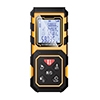 |
T-LDM-40 | $96.58 |
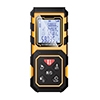 |
T-LDM-60 | $134.62 |
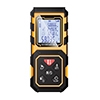 |
T-LDM-80 | $157.39 |
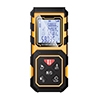 |
T-LDM-100 | $178.25 |
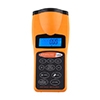 |
T-UDM-02 | $24.18 |
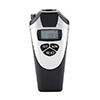 |
T-UDM-01 | $52.54 |
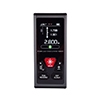 |
T-BLDM | $128.44 |
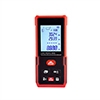 |
T-HLDM | $82.99 |
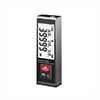 |
T-BTLDM | $105.87 |
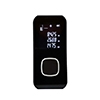 |
T-MLDM | $89.74 |
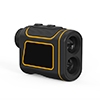 |
T-TLDM | $166.34 |
These distance meters have their focus in terms of measurement accuracy, features, and price, so users can choose the right model according to their needs. Higher-priced laser rangefinders usually have more intelligent features, such as data storage, Bluetooth connectivity, and durable housing design, which are suitable for professionals who need to use them for a long period. For general home improvement or indoor measurements, a low to mid-priced laser rangefinder will suffice.
How Laser Distance Meters Work?
Laser distance meters rely on the Time of Flight (TOF) principle. This principle determines the distance by calculating the time difference between the emission and return of the laser light. The process is as follows:
- Laser Emission: The rangefinder emits a laser beam toward the target object.
- Reflection of the Beam: The laser light reaches the target object and is reflected.
- Time Calculation: The timer inside the device records the time difference between laser emission and reception.
- Distance Calculation: Based on the speed of light and the time difference, the device calculates the distance from the rangefinder to the target object. The formula is: Distance = time difference x speed of light ÷ 2.
The advantage of this principle is that laser rangefinders provide accurate measurements even at long distances or in complex measuring environments. The laser beam attenuates less as it travels through the air, so accurate measurements can be obtained both indoors and outdoors.
Why Use a Laser Distance Meter?
Laser rangefinders offer several advantages over traditional measuring tools. Laser rangefinders can typically measure with millimeter accuracy, making them ideal for measurement tasks that require high precision. Laser rangefinders can measure distances from a few meters to thousands of meters, whereas traditional measuring tools are susceptible to interference at longer distances. High precision laser distance meters are small and lightweight, easy to carry and operate, and suitable for measurement work in complex environments. Traditional measurement usually requires the cooperation of many people, while laser rangefinders can be operated by a single person, which greatly improves work efficiency. Whether indoors or outdoors, day or night, laser rangefinders can work normally, adapting to the needs of measurement in different environments.
Laser distance meter plays an increasingly important role in modern measuring tools, its high precision, convenience, and fast response characteristics so that it has been widely used in many fields. Whether it's for building construction, interior decoration, engineering measurements, or everyday distance measurements, laser distance measurers can provide efficient and accurate solutions. By understanding the working principle, structure, and market price of laser rangefinders, we can more clearly understand where their advantages lie in different application scenarios. In the future, with the further development of technology, laser rangefinders will continue to improve in terms of accuracy, portability, and intelligence, bringing users a better experience and convenient measurement services. Choosing the right laser measurement instrument will make our work more efficient and the measurement process more accurate, truly realizing the concept of technology for life.

